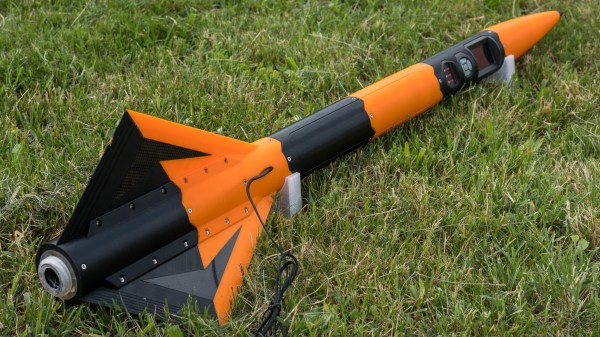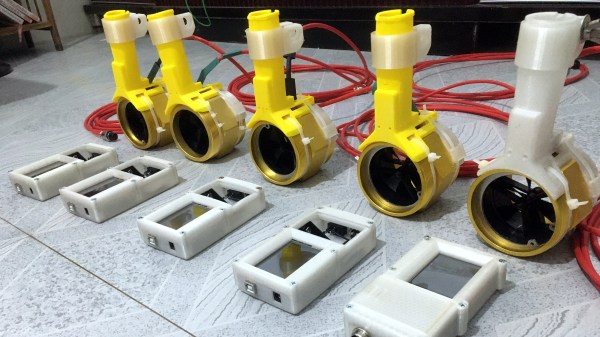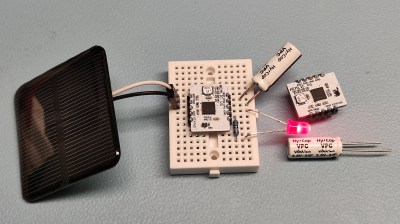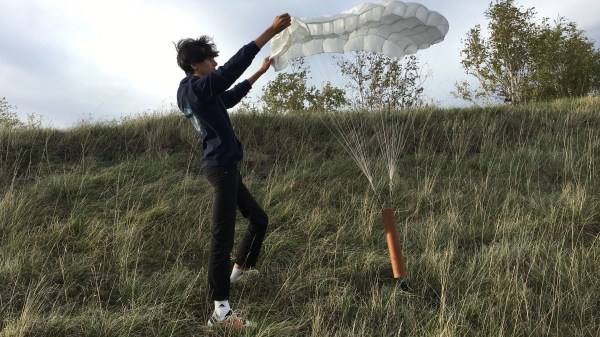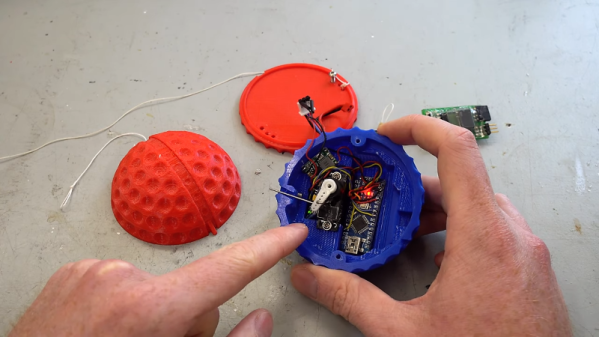We start this week with news from Mars, because, let’s face it, the news from this planet isn’t all that much fun lately. But a couple of milestones were reached on the Red Planet, the first being the arrival of Perseverance at the ancient river delta it was sent there to explore. The rover certainly took the scenic route to get there, having covered 10.6 km over the last 424 sols to move to a position only about 3.5 km straight-line distance from where it landed. Granted, a lot of that extra driving was in support of the unexpectedly successful Ingenuity demonstration, plus taking time for a lot of pit stops along the way at interesting features. But the rover is now in place to examine sedimentary rocks most likely to harbor the fossil remains of ancient aquatic life — as opposed to the mainly igneous rocks it has studied along the crater floor so far. We’re looking forward to seeing what happens.
parachute23 Articles
3D Printed Rocket’s Features Are Out Of This World
We’re delighted to see the progress on [Foaly]’s 3D-printed Cortex 2 rocket, and the latest build log is full of beautiful pictures and design details. Not only is this rocket jam-packed with an efficiency of electronics and smart design, but it almost seems out to single-handedly prove that 3D-printing is far from the novelty some think it is.
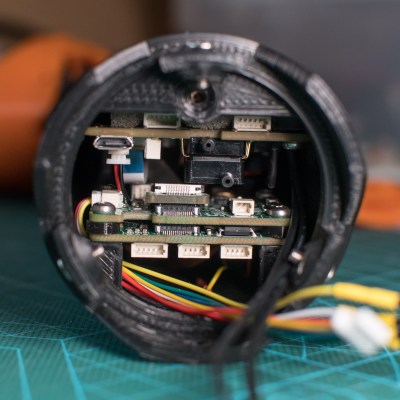
There is so much going on in the Cortex 2 that it simply wouldn’t be possible to do everything it does without the ability to make one’s own parts exactly to specification. In fact, there is so much going on that cable management is its own challenge.
Everything in the build log is interesting, but the design of the parachute system is of particular note. [Foaly]’s original Cortex rocket met it’s end when the parachute failed to deploy, and Cortex 2 is determined to avoid that fate if it can. For the parachute and any cords and anchors, a careful layout maximizes the chances of a successful deployment without anything tangling, but there are some extra features as well. The panel covering the parachute is mounted with the help of four magnets, which are mounted with opposing polarities. This provides an initial repulsing force when the door is unlocked by a servo, which should help wind immediately rush in to the opening to blow the panel away. The recovery system even has its own dedicated microcontroller and can operate autonomously; even if software for everything else crashes, the parachute will still get deployed. Locking connectors for all cables also ensure that acceleration forces don’t dislodge any contacts.
Everything about the rocket looks great, and the amount of work that has gone into the software is particularly evident. The main controller even has an interactive pre-flight checklist, which is a fantastic feature.
The last time we saw the Cortex 2 it was still only about half built, and we can’t wait to see how it performs. Rocketry is a field that has benefited greatly from things like 3D printing, the availability of highly-integrated electronics, and even such things as a rocket design workbench for FreeCAD. Better tools enable better work, after all.
Winners Of Hackaday’s Earth Day Contest: Solar LIC, Auto-Return Parafoil, & Water Flowmeter
Winners have just been announced for Hackaday’s Earth Day Challenge. We were on the lookout for projects that raise awareness of environmental issues and are happy to celebrate three top winners. Each have won a $200 shopping spree from Digi-Key who sponsored this contest.
Pictured above is the Open Flow Meter by [Eben]. The build includes sensors that are submerged into a river or stream to gauge the speed at which the water is moving. It uses a commodity plumbing flow volume sensor to help reduce costs, adding an Arduino and touch screen for reading the sensors and providing a UI to the user.
High-altitude balloons are used for air quality and weather sensing. To make those sensor packages more reusable, [Hadji Yohan] has been working on a parachute recovery system that automatically returns to a set GPS point. It’s a parafoil with auto-pilot!
Power harvesting is a fascinating and tricky game. To help ease the transition away from batteries, [Jasper Sikken] developed a solar harvesting module that charges a Lithium Ion Capacitor (LIC) from a very small solar panel. Based around a 100 uF 30 F capacitor, it uses an AEM10941 energy harvesting chip which includes Maximum Power Point Tracking (MPPT) to utilize the solar panel as efficiently as possible. The fully charged module can output regulated 2.2 V and is aimed at distributed sensor packages that can be run without any battery at all.
Congratulations to these three top finishers, as well as the b-parasite capacitive soil moisture sensor which was named as a runner up in the contest. There were 72 entries in this challenge so don’t forget to take a look at the entire field, and leave a comment on the ones that catch your eye to let them know we all love seeing details of great builds!
GPS Guided Parachutes For High Altitude Balloons
Most amateur high altitude balloon payloads descend back to earth with a simple non-steerable parachute and can land hundreds of kilometers from the launch site in inaccessible areas. [Yohan Hadji] experienced this first-hand during a balloon launch conducted by his high school, which inspired him to R2Home, a GPS-guided parachute recovery system.
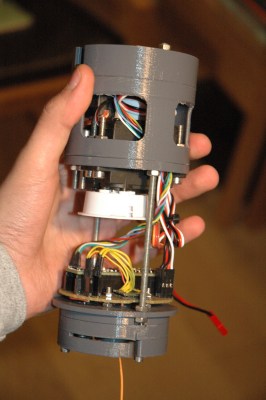
[Yohan]’s first challenge was to create a steerable parachute that can deploy reliably, so he started doing tests with a borrowed scale model paragliding wing. He quickly learned that a canopy aspect ratio of below two was needed for reliable deployment, so he started sewing his own canopies. Steering a parachute involves pulling on a pair of brake lines, one for each side of the parachute. A control stroke of about 20 cm was required, and [Yohan] found that RC sailboat winch servos work perfectly for this application. The entire system is designed to fit in a 7×40 cm tube, and the parachute is deployed with the help of a small drogue chute and a servo-operated release mechanism.
[Yohan] is working on a custom flight controller, built around a Teensy 4.1, GPS receiver, and digital compass. A possible alternative is Ardupilot, which we’ve seen used on several autonomous drones, gliders, and rovers. While this system might not be possible to return to the launch point, it could certainly close the gap, and land safely in a designated area.
So far [Yohan] has done a series of test drops from a drone at low altitude to test deployment and steering, using an RC controller. The project is open source, and the mechanical design files and control code is up on GitHub. As with most 16-year-olds, [Yohan]’s resources are limited, so feel free to drop him some financial help on the R2Home GoFundMe page. See the videos after the break for a development montage and project presentation. Continue reading “GPS Guided Parachutes For High Altitude Balloons”
Rocket Lab Sets Their Sights On Rapid Reusability
Not so very long ago, orbital rockets simply didn’t get reused. After their propellants were expended on the journey to orbit, they petered out and fell back down into the ocean where they were obliterated on impact. Rockets were disposable because, as far as anyone could tell, building another one was cheaper and easier than trying to reuse them. The Space Shuttle had proved that reuse of a spacecraft and its booster was possible, but the promised benefits of reduced cost and higher launch cadence never materialized. If anything, the Space Shuttle was often considered proof that reusability made more sense on paper than it did in the real-world.
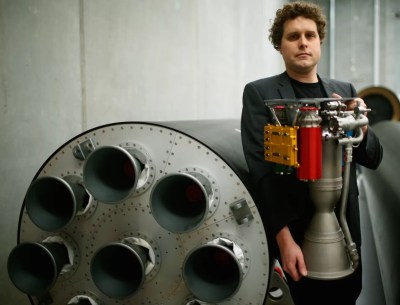
But that was before SpaceX started routinely landing and reflying the first stage of their Falcon 9 booster. Nobody outside the company really knows how much money is being saved by reuse, but there’s no denying the turn-around time from landing to reflight is getting progressively shorter. Moreover, by performing up to three flights on the same booster, SpaceX is demonstrating a launch cadence that is simply unmatched in the industry.
So it should come as no surprise to find that other launch providers are feeling the pressure to develop their own reusability programs. The latest to announce their intent to recover and eventually refly their vehicle is Rocket Lab, despite CEO Peter Beck’s admission that he was originally against the idea. He’s certainly changed his tune. With data collected over the last several flights the company now believes they have a reusability plan that’s compatible with the unique limitations of their diminutive Electron launch vehicle.
According to Beck, the goal isn’t necessarily to save money. During his presentation at the Small Satellite Conference in Utah, he explained that what they’re really going after is an increase in flight frequency. Right now they can build and fly an Electron every month, and while they eventually hope to produce a rocket a week, even a single reuse per core would have a huge impact on their annual launch capability:
If we can get these systems up on orbit quickly and reliably and frequently, we can innovate a lot more and create a lot more opportunities. So launch frequency is really the main driver for why Electron is going reusable. In time, hopefully we can obviously reduce prices as well. But the fundamental reason we’re doing this is launch frequency. Even if I can get the stage back once, I’ve effectively doubled my production ratio.
But, there’s a catch. Electron is too small to support the addition of landing legs and doesn’t have the excess propellants to use its engines during descent. Put simply, the tiny rocket is incapable of landing itself. So Rocket Lab believes the only way to recover the Electron is by snatching it out of the air before it gets to the ground.
Continue reading “Rocket Lab Sets Their Sights On Rapid Reusability”
Safety Systems For Stopping An Uncontrolled Drone Crash
We spend a lot of time here at Hackaday talking about drone incidents and today we’re looking into the hazard of operating in areas where people are present. Accidents happen, and a whether it’s a catastrophic failure or just a dead battery pack, the chance of a multi-rotor aircraft crashing down onto people below is a real and persistent hazard. For amateur fliers, operating over crowds of people is simply banned, but there are cases where professionally-piloted dones are flying near crowds of people and other safety measures need to be considered.
We saw a skier narrowly missed by a falling camera drone in 2015, and a couple weeks back there was news of a postal drone trial in Switzerland being halted after a parachute system failed. When a multirotor somehow fails while in flight it represents a multi-kilogram flying weapon widow-maker equipped with spinning blades, how does it make it to the ground in as safe a manner as possible? Does it fall in uncontrolled flight, or does it activate a failsafe technology and retain some form of control as it descends?
Continue reading “Safety Systems For Stopping An Uncontrolled Drone Crash”
Make Physics Fun With A Trebuchet
What goes up must come down. And what goes way, way up can come down way, way too fast to survive the sudden stop. That’s why [Tom Stanton] built an altitude recording projectile into an oversized golf ball with parachute-controlled descent. Oh, and there’s a trebuchet too.
That’s a lot to unpack, but suffice it to say, all this stems from [Tom]’s obvious appreciation for physics. Where most of us would be satisfied with tossing a ball into the air and estimating the height to solve the classic kinematic equations from Physics 101, [Tom] decided that more extreme means were needed.
Having a compound trebuchet close at hand, a few simple mods were all it took to launch projectiles more or less straight up. The first payload was to be rocket-shaped, but that proved difficult to launch. So [Tom] 3D-printed an upsized golf ball and packed it with electronics to record the details of its brief ballistic flight. Aside from an altimeter, there’s a small servo controlled by an Arduino and an accelerometer. The servo retracts a pin holding the two halves of the ball together, allowing a parachute to deploy and return the package safely to Earth. The video below shows some pretty exciting launches, the best of which reached over 60 meters high.
The skies in the field behind [Tom]’s house are an exciting place. Between flying supercapacitors, reaction wheel drones, and low-altitude ISS flybys, there’s always something going on up there.


